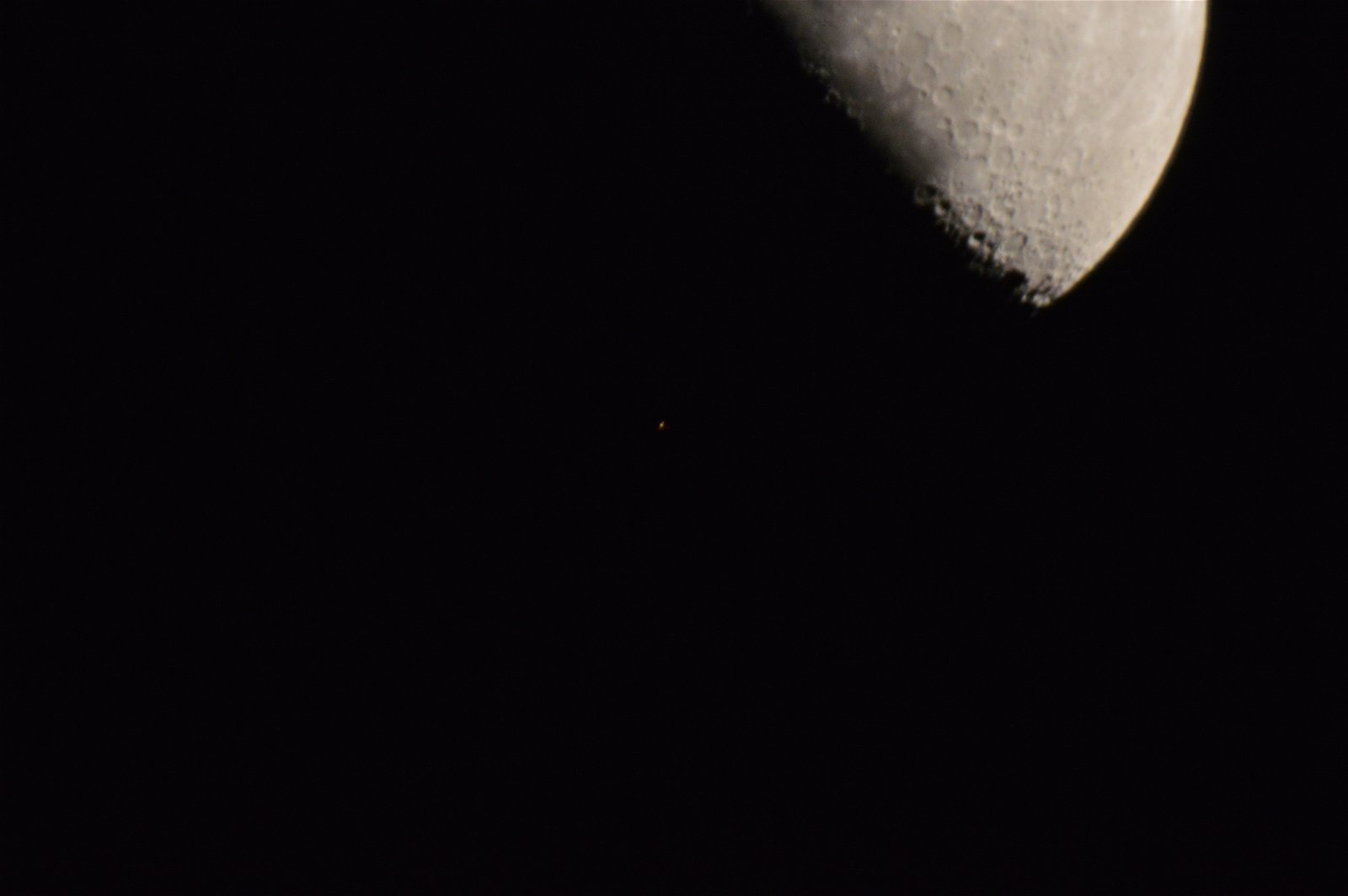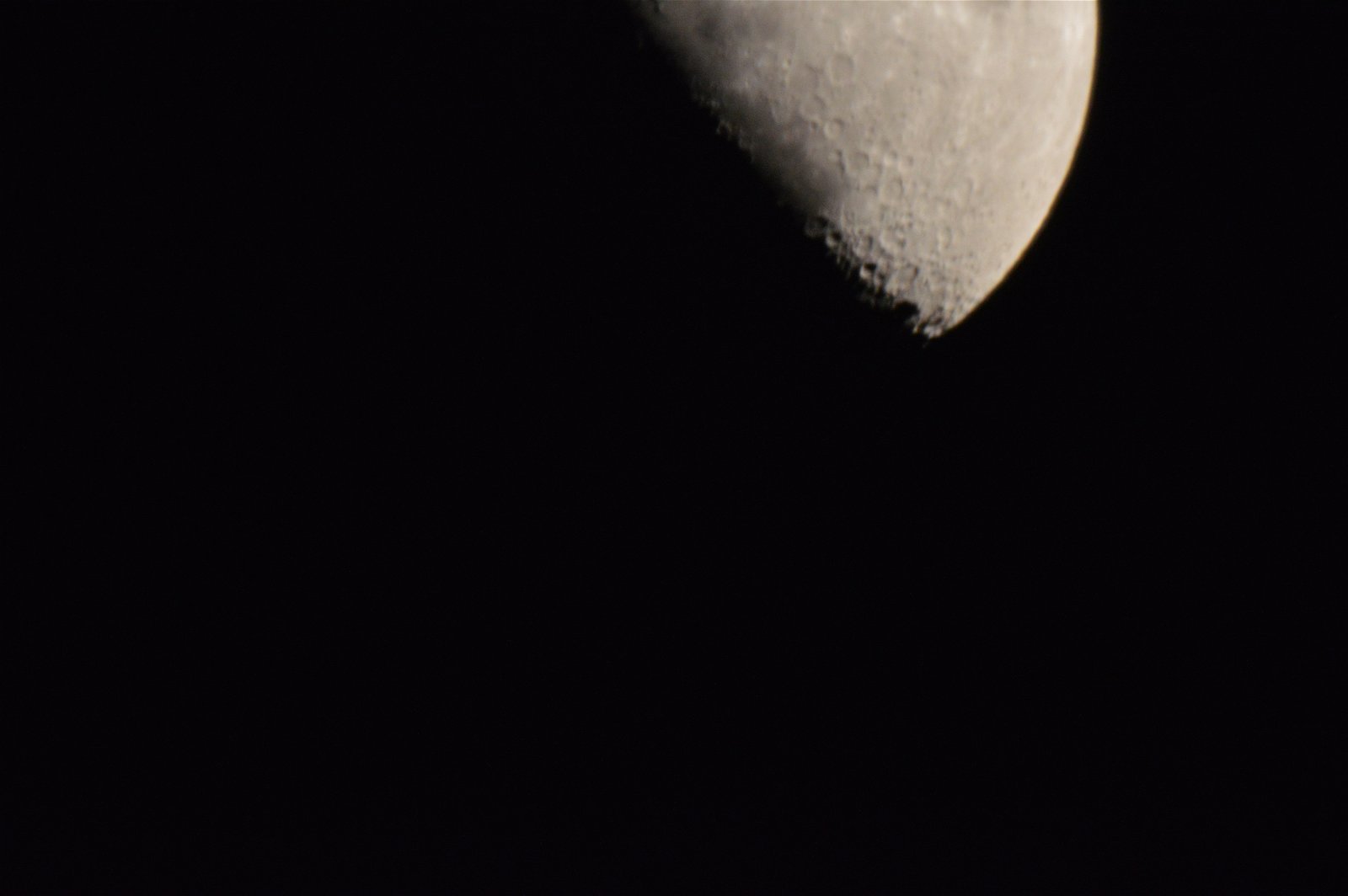
Is the Moon a Transparent Object?
The Recent Lunar Occultation of Antares Disproves a Flat-Earth Claim.
I have never seen stars through the moon, even though I probably have spent far more time looking at the moon than any flat-earther has looked at the moon.
Flat-earthers sometimes claim that the moon is transparent rather than a solid, opaque object. As evidence of this, flat-earthers claim that stars may be seen shining through the moon. Sure enough, there are videos out there in which one can see what appear to be stars shining through the moon. I have never seen stars through the moon, even though I probably have spent far more time looking at the moon than any flat-earther has. What are the “stars” in these videos? My best guess is that they are hot pixels in the cameras used to make these videos.
An excellent way to check the claim that the moon is transparent is to observe a lunar occultation of a bright star, which doesn’t happen very often. An occultation is when a larger-appearing body (such as the moon) passes in front of a smaller-appearing body (such as a star). If flat-earthers are correct about the moon being transparent, then stars should not disappear as the moon passes in front of them. There are a few bright stars that the moon occults. These can be predicted years in advance, so people can view these occultations, and with modern technology, it is relatively easy to photograph or record videos of them. I did the former six years ago when Aldebaran, among the 20 brightest stars in the sky, was occulted by the moon. Being in the first quarter phase, Aldebaran disappeared on the darkened limb (edge) of the moon, so if the moon were transparent, one would have readily seen Aldebaran through the dark part of the moon after the occultation began. I reported my results on this blog. In this test, I used my Nikon D3200 SLR camera with a zoom lens. In a photograph I took just before the occultation, Aldebaran is clearly visible, but in the second photograph, taken just after the occultation began, Aldebaran is not visible. It took a fraction of a second for Aldebaran to disappear. If one of the 20 brightest stars is not visible through the moon, then no stars will be visible through the moon.
On the evening of August 24, 2023, I had the opportunity to test this flat-earther claim further when, once again, the first quarter moon occulted a bright star. This time the star was Antares, the brightest star in the constellation Scorpius. Aldebaran and Antares vary slightly in brightness, but on average, they are respectively the 14th and 15th brightest-appearing stars, so these two stars are virtually the same brightness. This time, I was better prepared. I removed the lens from the same camera I used to photograph the occultation of Aldebaran and attached the camera to a 3.5-inch Questar telescope, making the telescope the lens of the camera. Flat-earthers like to use their Nikon P-900 and P-1000 bridge cameras to take zoomed images of things, including the moon and stars (though flat-earthers can’t seem to figure out how to focus their cameras on stars—perhaps I’ll blog about that sometime). The Questar’s 1,300 mm focal length is more than twice that of either of those bridge cameras, and the optical quality of the Questar is superior to the lenses of those two cameras.
I set up the telescope and camera on my driveway in Northern Kentucky more than a half hour before the occultation. I took a few photographs and did two brief test videos to make sure that I would be able to video this event rather than just take photographs of it. I began recording the occultation about 2 ½ minutes before the occultation was scheduled to begin and stopped the video 25 seconds after the occultation began. As you can see in the video, Antares abruptly disappeared 2 minutes and 34 seconds into the video. Once Antares disappeared, it was not visible through the moon.
Flat-earthers may object that we don’t see the moon’s limb in this video and ask how we know it was the moon that has blocked Antares from view. When the moon is at first quarter phase on earth, from the moon’s surface, the earth appears as a third quarter phase. So, from the surfaces of either body, the other body is a mirror image. Except that because of its larger size and greater reflectivity, from the moon, the earth is about a hundred times brighter than the moon appears on earth. Therefore, the landscape of the dark part of the moon is not entirely dark, but rather, it is flooded with reflected light from the earth. This earthshine is visible in the moon’s crescent phases, when from the lunar surface, the earth appears nearly full. At quarter and gibbous phases, earthshine is not visible, but a long exposure photograph can reveal earthshine, though it will overexpose the lit portion of the moon.


I took the first photograph about nine minutes before the occultation. The ISO setting was 1600, and the exposure time was 1/20 second. The moon is a little overexposed, but its features are easy enough to see. This photograph matches well the view in the video. I took the second photograph as soon as possible after the first photograph. The only thing I changed was the exposure time, which was 10 seconds—200 times longer than the first photograph. Because it was a longer exposure, Antares is a bit overexposed, and the lit part of the moon is greatly overexposed. In this photograph, you can see the dimly lit dark portion of the moon. The moon’s orbital motion carries the moon from upper right to lower left, along a line perpendicular to the moon’s terminator (the division between light and dark on the moon). With knowledge of the direction of lunar motion, one can see in this second photograph that the moon’s dark limb will soon block out Aldebaran. Also, notice the much fainter star to the lower left that was too faint to be recorded in the first photograph.
Shortly after the occultation ended, I stopped the recording, and I repeated the sequence of the two photographs with the same ISO setting and exposure times as before (below). The third photograph is the 1/20 second exposure. Notice that it looks very similar to the first photograph, except that Antares is not visible. The fourth photograph is the 10-second post-occultation photograph. Notice that the fourth photograph looks similar to the second photograph, along with the star to the lower left, but Antares is not visible. I printed the two 10-second photographs with the same scale. I measured the distance between the star on the lower left and Antares on the pre-occultation photograph. The distance was 150 mm. When I placed the ruler on the post-occultation photograph with the same orientation as in the pre-occultation photograph, the 150 mm point from the star on the lower left, where Antares would be, was 2–3 mm inside the dark part of the moon. Hence, we can be sure that the moon is in front of Antares in the post-occultation set of photographs.


Since Antares is one of the brightest stars in the sky, and it cannot be seen through the moon, this is definitive proof that stars cannot be seen through the moon.
Since Antares is one of the brightest stars in the sky, and it cannot be seen through the moon, this is definitive proof that stars cannot be seen through the moon. Will this change the minds of many flat-earthers? I doubt that it will change the minds of any flat-earthers. In my experience, they are a stubborn bunch, and they will not let go of a notion even when confronted with overwhelming evidence that what they have chosen to believe is false. It’s not as if what I presented here is evidence that the earth is spherical and not flat. Flat-earthers could easily give up this false claim about the moon being transparent and still maintain that the earth is flat. That is an irrational response. This is cultlike behavior, something that I have commented on before. As I’ve discussed elsewhere, the flat-earth movement is a threat to Christianity, which is why I remain vigilant in monitoring this movement.

Answers in Genesis is an apologetics ministry, dedicated to helping Christians defend their faith and proclaim the good news of Jesus Christ.
- Customer Service 800.778.3390
- © 2024 Answers in Genesis
